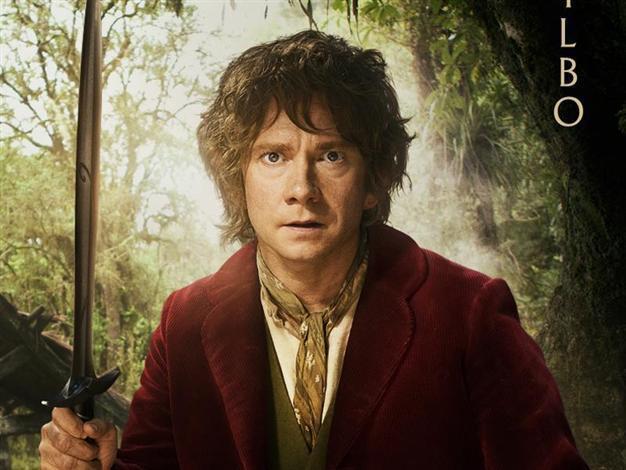Critics give epic 'Hobbit' middle marks
NEW YORK - Agence France-Presse

Reviews from journalists, who got to see the nearly three-hour movie ‘The Hobbit: An Unexpected Journey’ ahead of its Dec. 14 US premiere, are somewhere in the middle.
Peter Jackson’s “The Hobbit: An Unexpected Journey” opens in the US this month and critics say the movie, much like the epic journey it depicts, is adventurous but an uphill slog.The fantasy about a Hobbit called Bilbo Baggins, Gandalf the good wizard, 13 raucous dwarves, and a host of evil forces, takes viewers back to the lavishly filmed Middle-earth world that won Oscars and rave reviews in Jackson’s previous “Lord of the Rings” trilogy.
But reviews from journalists, who got to see the nearly three-hour movie ahead of its Dec. 14 US premiere, were also somewhere in the middle.
Jackson’s technical wizardry, using 3D and 48 frames a second, rather than the ordinary 24 frames, got gasps of admiration, mixed with yawns about overkill.
And while the New Zealand-born director scored high marks for the faithfulness of the adaption from J.R.R. Tolkien’s book, there was incredulity and some cynicism about the decision to split the relatively slender “Hobbit” into three enormous movies.
“In Jackson’s academically fastidious telling, however, it’s as if ‘The Wizard of Oz’ had taken nearly an hour just to get out of Kansas,” The Hollywood Reporter said in a bruising review.
“There are elements in this new film that are as spectacular as much of the Rings trilogy was, but there is much that is flat-footed and tedious as well.” Variety’s critic took aim at the overwhelming detail poured into 48-frames-a-second pictures.
“Everything takes on an overblown, artificial quality in which the phoniness of the sets and costumes becomes obvious, while well-lit areas bleed into their surroundings, like watching a high-end home movie,” Variety said.
Screening for journalists
“The Hobbit,” which was screened for journalists in New York on Dec. 4, is a prequel to the darker “Lord of the Rings,” introducing the main characters and plot lines that reappear through the entire saga. The cursed golden ring also makes its first appearance.
There are bravura battle scenes, choreographed hordes of Goblins, fantastical caves, and James Bond-style narrow escapes from death for Martin Freeman’s Bilbo Baggins and his dwarf friends. As in the three “Rings” movies, the natural settings of New Zealand are breathtaking.
But with so many strange beings attacking each other with swords, and so many arrows, rocks and bodies flying in 3D at the audience, the few intimately staged scenes focusing on just a couple characters can come as a relief.
When the action cut suddenly from the latest mass sword fight to a silent cave inhabited by Andy Serkis’ creepy character Gollum, journalists at the press screening broke out in a rare smattering of applause.
Jackson defended the decision to stretch the book to three movies, in contrast to the “Rings” trilogy, which was based on three books.
‘Tolkien’s breathless text’
He told reporters Dec. 5 in New York that in Tolkien’s often “breathless” text, “very major events are covered in two or three pages,” and that transferring the action to film required a more sumptuous treatment.
The reviews for “The Hobbit” were far from universally negative, and many critics said the three films may well make healthy profits. On the reviews aggregator website Rotten Tomatoes, the rating of fresh versus rotten tomatoes was a high 78 percent Dec. 5.
Great British actor Ian McKellen, who reprised his “Rings” role as Gandalf in “The Hobbit,” batted down suggestions that the filmmakers were trying to milk the maximum profit out of Tolkien fans.
















